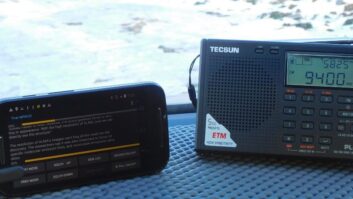Among the most valuable tools in any RF toolbox is the Bird Model 43 Thruline Wattmeter. Take it from a man who has fried endless number of IF transformers, transistors and dummy loads in an inept illusive quest for accurate RF information and tuning.
J. Raymond Bird, who had founded the company a decade earlier, invented this practical device in 1952, 50 years ago. More than a quarter of a million wattmeters have followed that unit off the production line.
Bird himself died in 1962, but the model is still made today.
The basic Bird unit isolates and displays the RF power in watts going in just one direction. By tabulating and comparing the power going to the load and coming back (reflected) from the load, important data such as power on the line, transmitter power output, SWR and probable load impedance or load characteristics can be calculated and examined.
The RF reading actually is a traveling-wave, rectified sample of the main signal extracted by a loop as it passes through the small section of coax in the meter. Because the length of the loop, intimacy and line in wavelength vary as a function of frequency and hence the proportionate value of that sample, for spectrum flexibility Bird choose to design plug-in “frequency elements.”
This unique element system made the meter highly accurate within the frequency range indicated on the element and extended the meter’s potential usefulness through most of the RF spectrum.
Beat but accurate
You may be familiar with the portable Bird 43 may own, or have borrowed and forgotten to return the elements needed for those parts of the spectrum that we investigate.
My infamous yellow RF toolbox contains the Bird 43 that was given me by RCA Broadcast (remember that?) and elements for the FM band, TV and 950 MHz STL channels.
This might be an original Bird unit – RCA never threw anything out – and so is probably as old as I am. We’re both a little beat, but we’re as accurate and hardworking as when we were new.
Like small gold-plated shot glasses, the elements slide gracefully into the front of the Bird meter. The arrow points in the direction in which we want to measure the power.
Conveniently, you can rotate the element to change measurement direction without having to power down. The frequency range and the maximum full-scale power that can be read are annotated on the visible top of the element
Many RF measurements must be made on a continuous basis. Over the years, permanently mounted Thruline Wattmeters for higher power situations were developed by Bird and found their way into transmitter installations. They work the same way as those little Bird 43s.
In the movie “Galaxy Quest,” a character states that simple things give the greatest joy. One of the simple joys for radio engineers is to see that Bird meter peak up, knowing that our attentive work has allowed us to generate the maximum power into a perfect load.







